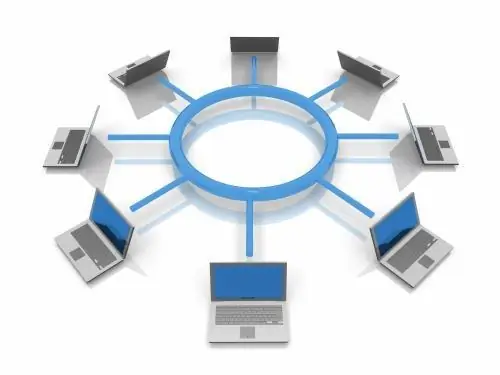- Author Lauren Nevill [email protected].
- Public 2023-12-16 18:48.
- Last modified 2025-01-23 15:15.
Firewall is the first line of defense against unauthorized access from the Internet. Let's look at how you can easily protect a local network using the Traffic Inspector firewall.

Necessary
- - computer
- - Traffic Inspector program
Instructions
Step 1
Download Traffic Inspector program. It is best to use the 64-bit version of the program. Wait for the download to complete and run the installation file. During the installation process, the program will download all the components necessary for its operation (Microsoft. NET Framework, C ++ Redistributable Package).
Step 2
At the first start, Traffic Inspector will offer to activate the program. After activation, the program is ready to work in fully functional mode. Following activation, Traffic Inspector will automatically launch the application setup wizard. If you accidentally interrupted the configuration process, you can always start the wizard again - in the Administrator Console in the navigation pane, find the Settings node, the Traffic Inspector Settings frame, the Traffic Inspector Advanced Settings Wizard command link.
In the process of working with the wizard, select the "Server - network gateway" operating mode, correctly classify the interfaces into external (connected to the Internet) and internal (connected to the local network). Since we are performing the basic configuration, you can safely skip the wizard tabs dedicated to the settings of other Traffic Inspector services and mechanisms. If you need to choose between ICS NAT and RRAS NAT, follow the next rule. RRAS NAT is more functional, supports more than one internal interface, and is generally only available on server versions of Windows operating systems.
In the second part of the setup wizard, on the "Services" tab, check the "Enable Traffic Inspector firewall" checkbox. On the "External firewall" tab, select the external interfaces on which the Traffic Inspector firewall will be enabled. External interfaces are the interfaces through which Traffic Inspector connects to the Internet.
Step 3
Add users to the program. This can be done in several convenient ways. When a user who does not yet have an account in Traffic Inspector tries to access the Internet, Traffic Inspector creates a blank account. The blanks can be viewed and turned into full-fledged accounts through the Traffic Inspector / Traffic accounting / Unauthorized IP node. Another way to create users is to scan the local network. Go to the Traffic Inspector / Users and Groups node, the "Users and Groups" frame and click on the "Import Users" link. Traffic Inspector can scan local network or download user data from Active Directory domain, if configured on your network. For a successful import from AD, the machine with Traffic Inspector must also be in the domain.
Step 4
By default, the firewall prevents any attempts to connect from the outside, but at the same time allows users of the local network to connect to computers on the Internet. External connections using specific protocols and ports can be allowed using firewall rules. These rules can be created through the "Rules" node, the "Firewall" subnode.






